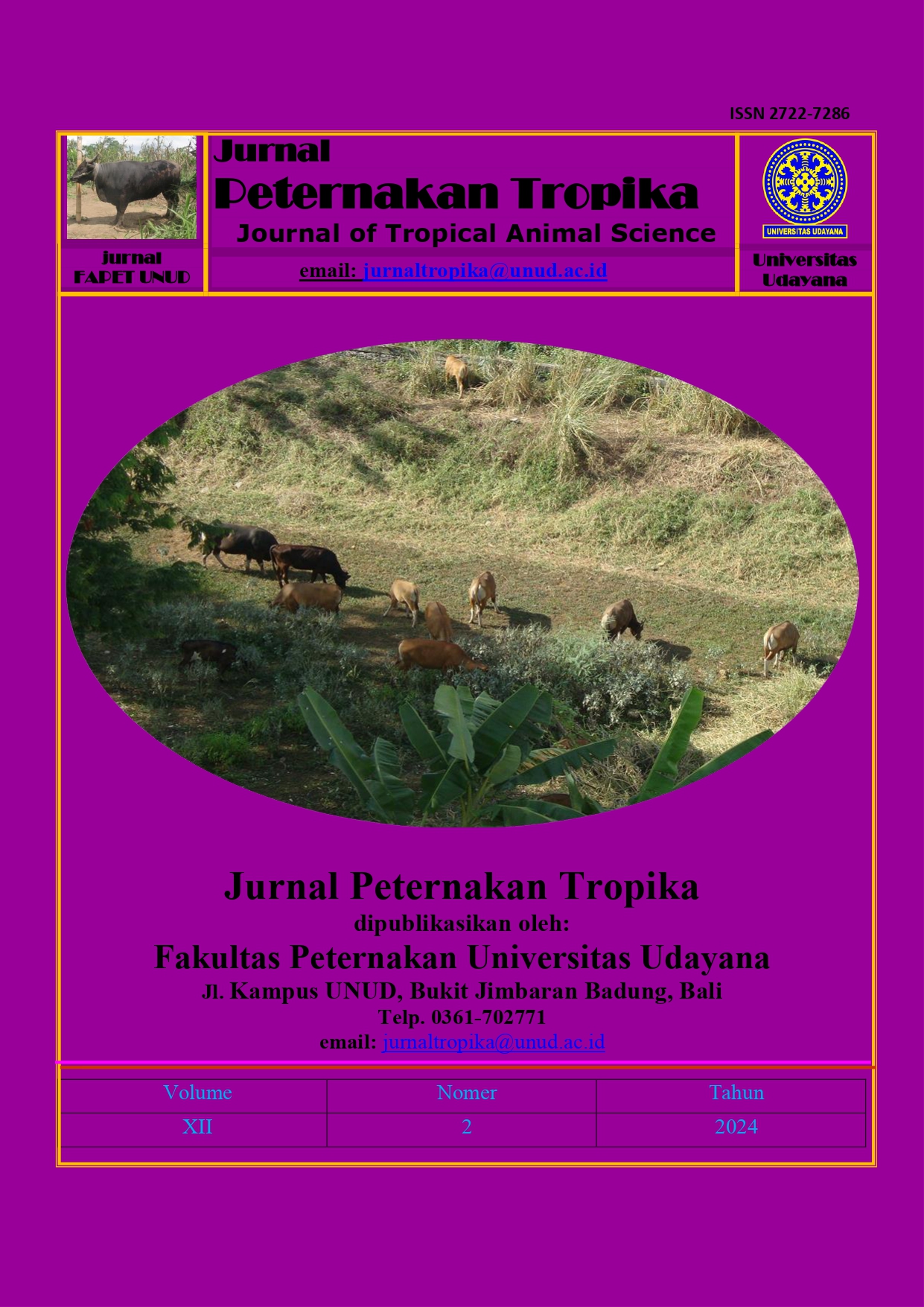THE EFFECT OF Plant Growth Promoting Rhizobacteria (PGPR) Doses of Pennisetum purpureum ON GROWTH AND YIELD OF Asystasia gangetica (L.) subsp. Micrantha IN DIFFERENT SOIL TYPES
Abstract
The aim of this study was to determine the effects of different doses of plant growth promoting rhizobacteria (PGPR) on the growth and yield of Asystasia gangetica (L). subsp. Micrantha. The research was conducted at the Sesetan Research Station Greenhouse, Faculty of Animal Husbandry, Udayana University, and lasted for 8 weeks (2 months). The experimental design used was a completely randomized design with a Split Plot pattern, with three levels of PGPR doses, namely P0 = 0 ml/liter of water, P10 = 10 ml/liter of water, and P20 = 20 ml/liter of water as the subplots. Three different types of soil were used: soil from Farm Sobangan/Latosol (TL), Farm Pengotan/Regosol (TR), and Farm Bukit Jimbaran/Mediterranean (TM), as the main plots. This resulted in nine treatment combinations: TLP0, TLP10, TLP20, TRP0, TRP10, TRP20, TMP0, TMP10, and TMP20. Each treatment was replicated four times, resulting in a total of 36 experimental units/pots. The variables observed included growth variables, yield variables, and plant characteristics. The results showed that the application of PGPR at a dose of 10 ml/liter of water on latosol soil delayed the flowering time of Asystasia gangetica (L). subsp. Micrantha. In conclusion, the application of PGPR doses was not able to enhance the growth and yield of Asystasia gangetica (L). subsp. Micrantha.






